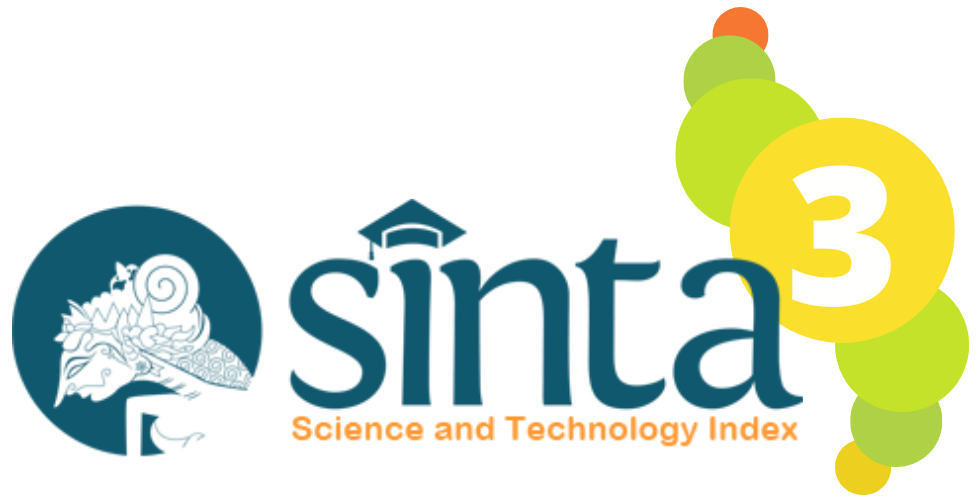PENERAPAN MEDIA COUNTING BOX (KOTAK BERHITUNG) UNTUK MENINGKATKAN HASIL BELAJAR MATEMATIKA
DOI:
https://doi.org/10.32585/dikdasbantara.v5i2.2491Keywords:
Media Counting Box, Learning Outcomes, MathematicsAbstract
This study aims to improve the learning outcomes of grade one students at Al-Muflihun Islamic Elementary School by applying the Counting Box media. The subjects of this research are students the first grade of Al Muflihun Islamic Elementary School, totaling 31 students, with 18 boys and 13 girls .The type of research used is Classroom Action Research (CAR).which consists of 2 cycles, each cycle consists of 2 meetings. The data collecting technique were used observation and written tests. Based on research results it can be concluded that in the first cycle of the student learning outcomes completeness 77.5% with class average is 77.7 and has not yet reached the 80% success indicator. Completeness of results student learning in the second cycle is 93.6% with a class average of 89.03 and reachesindicator of success that has exceeded 80%. Thus it can be concluded that with the application of Counting Box media can improve student learning outcomes first grade at Al Muflihun Islamic Elementary School on addition and subtraction mathematics numbers 1-50.
Downloads
References
Kementrian Pendidikan dan kebudayaan. 2020. Profil Guru Sekolah Dasar. Jakarta : Depdiknas.
Muhsetyo, Gatot., et.al. 2019. Pembelajaran Matematika SD. Tanggerang Selatan : CV. Karya Indonesia.
Parnawi, Afi. 2020. Penelitian Tindakan Kelas (Classroom Action Research). Yogyakarta: Deepublish.
Peraturan Menteri Pendidikan dan Kebudayaan. 2016. Standar Isi Pendidikan Dasar dan Menengah. Jakarta. Permendikbud.
Prastowo, Andi. 2015. Menyusun Rencana Pelaksanaan Pembelajaran (RPP) Tematik Terpadu. Jakarta : Prenadamedia Group.
Purwanto, Ngalim. 2011. Evaluasi Hasil Belajar. Yokyakarta: Pustaka Pelajaran.
Sani, Ridwan Abdullah. 2014. Inovasi Pembelajaran. Jakarta : PT Bumi Aksara.
Siregar, Pariang Sonang., et.al. 2017. Penerapan Pendekatan Pembelajaran Aktif Inovatif Kreatif Efektif dan Menyenangkan (PAIKEM) Pada Pembelajaran Matematika Kelas IV SD Negeri 010 Rambah. Jurnal Pendidikan dan Pengembangan SD, Vol.5 nomor 2, h.743-749.
Siregar, Pariang Sonang. 2019. Ayo Latihan Mengajar, Implementasi Kurikulum 2013 Di Sekolah Dasar (Peerteaching dan Microteaching). Yogyakarta : Deepublish.
Slameto. 2014. Belajar dan Faktor-Faktor Mempengaruhinya. Jakarta: Rineka Cipta.
Sudjana, Nana. 2016. Penilaian Hasil Proses Belajar Mengajar. Bandung: Remaja Rosda Karya.
Sugiyono. 2019. Statistik Untuk Penelitian. Bandung : Penerbit ALFABET.
Suryani, Nunuk & Achmad Setiawan. 2018. Media Pembelajaran Inovatif dan Pengembangannya. Bandung : PT Remaja Rosdakarya.
Suryanto, Adi. 2014. Evaluasi Pembelajaran di SD. Tanggerang Selatan : CV Karya Indonesia.
Utami, Nur Aprilia. 2019. Analisis Kemampuan Penjumlahan dan Pengurangan Bilangan pada Siswa SD. Jurnal Elementary. Vol, 2. No.2 Juni 2019, hal.39-43.
Wardhani, IGAK & Kuswaya Wihardit. 2019. Penelitian Tindakan Kelas. Tanggerang Selatan : CV. Karya Indonesia.
Wati, Ega Rima. 2017. Ragam Media Pembelajaran. Yogyakarta : Kata Pena.
Wandini, Rora Rizki, & Oda Kinata Banurea. 2019. Pembelajaran Matematika Untuk Calon Guru MI/SD. Medan : CV. Widya Puspita.
Widiada, Parmiti. 2018. Pengembangan Media Pembelajaran Sederhana Kotak Hitung Pada Tema Lingkunganku Bidang Matematika di Kelas II SD Negeri 2 Liligundi. Jurnal EDUTECH Universitas Pedidikan Ganesha. Vol. 6 No. (1) pp. 110-122.
Widiastuti, Erni. 2018. Meningkatkan Hasil Belajar dan Keaktifan Siswa dalam Materi Penjumlahan dan Pengurangan Bilangan sampai 20 dengan Menggunakan Permainan Bola Keranjang Siswa Kelas 1 SD Negeri Kaliangkrik. Jurnal Mitra Pendidikan (JMP Online). Vol. 2. No. 11 November (2018) 1323-1.
Downloads
Additional Files
Published
Issue
Section
License
The copyright to this article is transferred to Jurnal Dikdas Bantara if and when the article is accepted for publication under Creative Commons Attribution-ShareAlike 4.0 International License. The undersigned hereby transfers any and all rights in and to the paper including without limitation all copyrights to Jurnal Dikdas Bantara. The undersigned hereby represents and warrants that the paper is original and that he/she is the author of the paper, except for material that is clearly identified as to its original source, with permission notices from the copyright owners where required. The undersigned represents that he/she has the power and authority to make and execute this assignment.We declare that:
1. This paper has not been published in the same form elsewhere.
2. It will not be submitted anywhere else for publication prior to acceptance/rejection by this Journal.
3. A copyright permission is obtained for materials published elsewhere and which require this permission for reproduction.
Furthermore, I/We hereby transfer the unlimited rights of publication of the above-mentioned paper in whole to Jurnal Dikdas Bantara. The copyright transfer covers the right to reproduce and distribute the article, including reprints, translations, photographic reproductions, microform, electronic form (offline, online), or any other reproductions of similar nature. The corresponding author signs for and accepts responsibility for releasing this material on behalf of any and all co-authors. After submission of this agreement signed by the corresponding author, changes of authorship or in the order of the authors listed will not be accepted.
Retained Rights/Terms and Conditions
1. Authors retain all proprietary rights in any process, procedure, or article of manufacture described in the work.
2. Authors may reproduce or authorize others to reproduce the work or derivative works for the author’s personal use or for company use, provided that the source and the Jurnal Dikdas Bantara copyright notice are indicated, the copies are not used in any way that implies Jurnal Dikdas Bantara endorsement of a product or service of any employer, and the copies themselves are not offered for sale.
3. Although authors are permitted to re-use all or portions of the work in other works, this does not include granting third-party requests for reprinting, republishing, or other types of re-use.



















